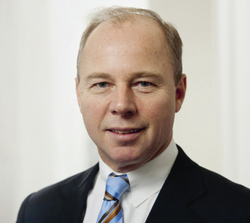The Complexity of Inequality
Since 2013, when Thomas Piketty published his much-discussed study of the distribution of income and wealth, inequality has been at the forefront of public debate in most advanced economies, blamed for everything from slow growth and stagnating productivity to the rise of populism and the Brexit vote. But inequality remains poorly defined, its effects highly variable, and its causes hotly debated.
Even the most basic question – how much inequality is too much – is virtually impossible to answer. There is no natural rate of inequality characterizing an economy in equilibrium, a level at which policymakers can aim. Instead, countries’ rates of inequality are measured against one another – a narrow approach that ignores everything from broader economic trends to differences in the impact of wealth inequality on populations in different social environments.
At a time when everyone seems to be complaining about inequality, wealth is, at the global level, more broadly distributed than ever. In the last 16 years alone, the number of people who qualify for inclusion in the global middle class – at today’s level, people with net financial assets of €7,000-42,000 ($7,400-$44,600) – has more than doubled, to over one billion, or about 20% of the world population.
And it is not just the middle class that is growing. At the end of last year, around 540 million people around the world could count themselves among the global wealthy, with net assets above €42,000. That is some 100 million, or 25%, more than in 2000.
The key to this progress has been the success of the emerging economies, especially China. And, indeed, many of those who have joined the high-wealth group are not from the traditional “rich” countries; on the contrary, the United States, Japan, and Western Europe now have just 66% of the world’s high-wealth households, compared with over 90% in 2000.
On the national level, inequality is rising, but only in some places. In the emerging economies, the share of wealth owned by the middle class is increasing, indicating a drop in wealth inequality. It is primarily in the industrialized world that inequality is on the rise, with the share of wealth held by the top 10% growing the most.
This discrepancy may be explained partly by the fact that the global financial crisis was most painful for the advanced countries, especially in Europe. But the expansionary monetary policies that advanced-country central banks pursued after the crisis made a bad situation worse.
Those policies pushed up prices of assets – especially bonds and equities – that were held largely by wealthy households. At the same time, they hurt middle-class savers, who typically rely on duller savings instruments like bank deposits. With zero or, later, negative interest rates, those savers lost out. Though median households are generally benefiting from lower borrowing costs, wealthier households are benefiting much more, thanks in part to savings on mortgage loans, which are highest relative to income for the upper middle class.
But the impact of ultra-loose monetary policy extends far beyond today’s wealth and income effects. With advanced-country populations aging rapidly, saving for old age is more important than ever. With very low interest rates reducing the rate of accumulation of pension assets, all but the wealthiest households will probably have to boost savings and/or reduce consumption, now and in the future. The decline in lifetime spending will ultimately have a negative impact on growth and potentially generate social fault lines for the coming generations.
Complicating the inequality narrative further are differences across individual economies, including among those that, technically, have similar levels of inequality. Consider the disparities between the US, Denmark, and Sweden – all three of which are among the world’s most unequal societies, with respect to the distribution of wealth.
Denmark and Sweden are known for their well-developed social-welfare systems, free education, and high labor-market participation. Moreover, Denmark took the top spot in the United Nations’ World Happiness report last year, suggesting that wealth inequality does not trouble Danes too much.
By contrast, in the US, which lacks many of the social protections provided by its northern European counterparts, inequality is very troubling indeed. The increase in wealth inequality there over the last decade has been the most pronounced of any country. Today, the US has the smallest middle class, holding just 22% of total net financial assets, half the average of other industrialized countries, and the highest concentration of wealth than in any other country.
As in Europe or Japan, the financial crisis and subsequent monetary policy might be a major cause for this development. However, another factor could also be the digital revolution which, at least for the main protagonists, is increasingly turning out to be a “wealth catalyst”. In any case, it is important to recognize that America’s situation is extraordinary. It does not represent the state of Western capitalism. It is the exception, not the rule.
All of this has important implications for how to tackle inequality. Simply put, if the causes and impacts of inequality differ across countries, so should the policy prescriptions.
For some countries, such as in southern Europe, tackling unemployment is critical to enable middle- and lower-income households to save and consume. Other countries should focus on improving the conditions for long-term savings, such as through occupational pension schemes. Still others would do well to reduce the tax burden, in particular for low- and middle-wage earners.
There is, however, one policy prescription that would benefit many of the countries with the highest levels of inequality. Central banks must bring down the curtain on zero and, especially, negative interest rates. Doing so would certainly be a good start to combating rising wealth inequality.











